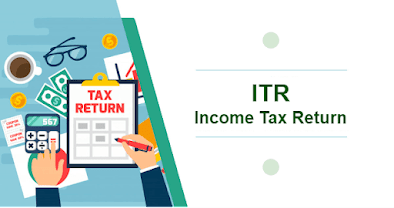Title: Choosing the Right ITR Form for Salaried Employees: Only Salary Income vs. Salary with Share, Interest, and Mutual Fund Income
Introduction:
ITR Form 1 (SAHAJ):
ITR Form 1, commonly known as SAHAJ, is the most basic ITR form applicable to salaried individuals with income from salary/pension, one house property, and other sources (except lottery winnings and racehorse income). This form is suitable for salaried employees who do not have any income from shares, interest, or mutual funds. SAHAJ is a simplified form, requiring fewer details compared to other forms, making it user-friendly for individuals with straightforward income sources.
ITR Form 2 (ITR-2):
ITR Form 2, also known as ITR-2, is applicable to
individuals and Hindu Undivided Families (HUFs) who have income from more than
one source, including salary, house property, capital gains(Share & Mutual fund, House property sold), and other sources.
If you, as a salaried employee, earn income from shares, interest, or mutual
funds, you are required to file ITR-2. This form allows you to provide
comprehensive details of your income, including the specifics of your share
trading, interest earned from savings accounts, fixed deposits, and income from
mutual funds.
Key Considerations:
When selecting the appropriate ITR form, it's essential to
consider the following points:
1. Nature of Income: Determine the nature of your income
sources, including salary, house property, capital gains, and other sources like
shares, interest, and mutual funds. Categorizing your income correctly will
help you identify the relevant ITR form.
2. Form Specifics: Familiarize yourself with the
instructions and requirements of each ITR form. Ensure that the form you choose
allows you to report your income accurately and provide the necessary details.
3. Accuracy and Compliance: Ensure that you provide accurate
information and comply with all tax regulations. Mistakes or omissions can lead
to penalties and unnecessary scrutiny from tax authorities.
Conclusion:
As a salaried employee, understanding the right ITR form to select is crucial to ensure accurate reporting and compliance with tax regulations. If you have only salary income, the ITR Form 1 (SAHAJ) will suffice. However, if you earn additional income from shares, interest, or mutual funds, you should file your returns using ITR Form 2 (ITR-2). Being aware of the specific requirements and details of each form will enable you to file your tax returns correctly and efficiently. It's advisable to consult a tax professional or refer to the official guidelines provided by the Income Tax Department for further assistance in choosing the appropriate ITR form for your specific income sources.
Caution: Do not presume that you can omit to report other income in your ITR-1 just because you have not received any notices so far. The Income Tax Department has started issuing various notices based on information generated from the Annual Information System (AIS), as we will discuss in upcoming blogs.


Helpful ☺️
ReplyDeleteglad you know
DeleteHelpful 🙂
ReplyDelete